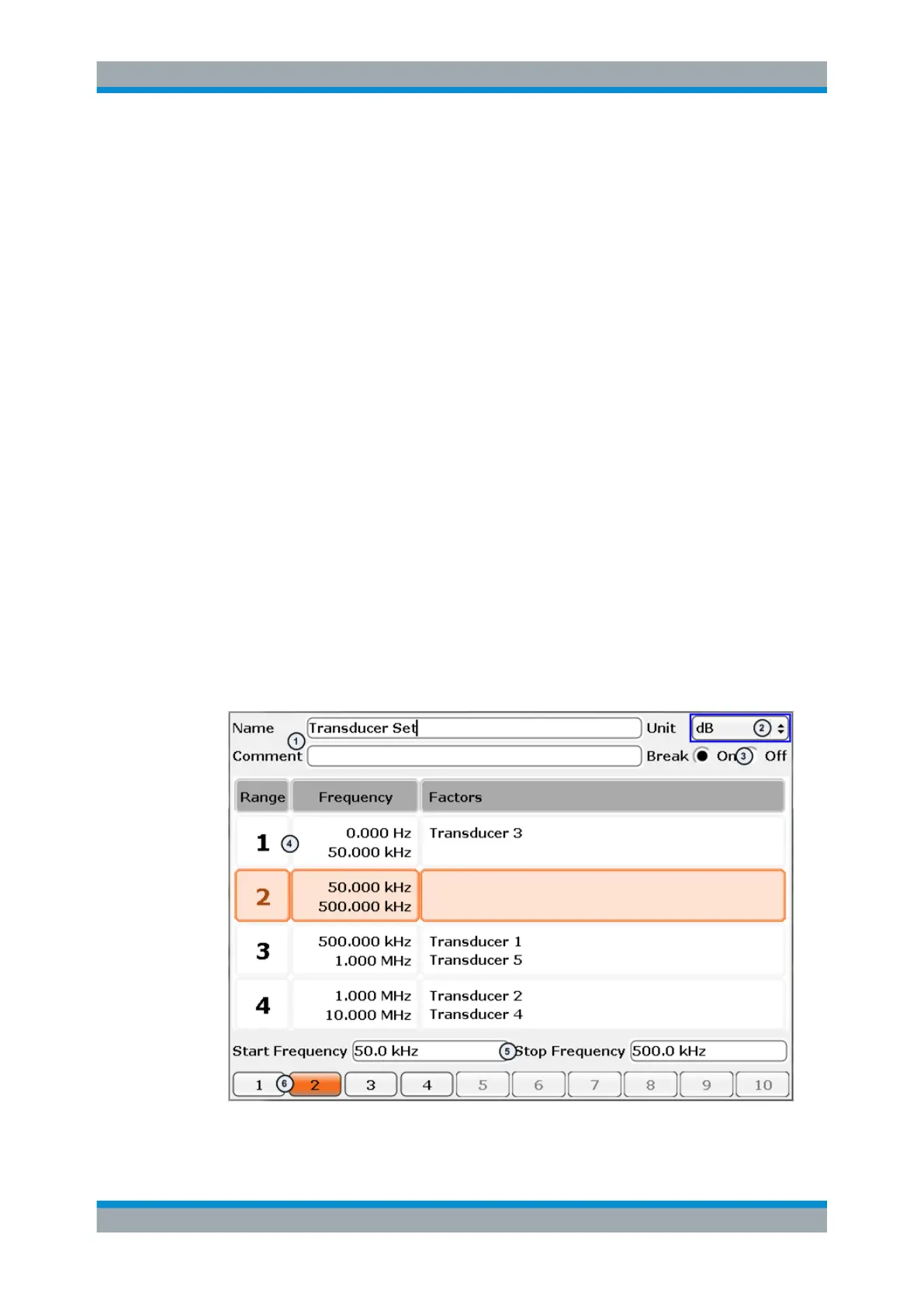System Configuration
R&S
®
ESR
510User Manual 1175.7068.02 ─ 12
The shift of the trace caused by the transducer factor by a certain amount deteriorates
the dynamic range of the measurement results.
To restore the original dynamic range, you have to compensate for the transducer fac-
tor. You can do this by adjusting the reference level accordingly. If you turn on the auto-
matic adjustment of the reference level (using the "Ref Level Adjust (Man Auto)" soft-
key), the R&S ESR restores the original dynamic range as best as possible. It does so
by changing the reference level by the maximum level shift defined in the active trans-
ducer factor.
Remote command:
[SENSe:]CORRection:TRANsducer:SELect on page 953
[SENSe:]CORRection:TRANsducer:COMMent on page 951
[SENSe:]CORRection:TRANsducer:UNIT on page 953
[SENSe:]CORRection:TRANsducer:SCALing on page 952
[SENSe:]CORRection:TRANsducer:DATA on page 952
[SENSe:]CORRection:TRANsducer:DELete on page 952
[SENSe:]CORRection:TRANsducer:ADJust:RLEVel[:STATe] on page 950
Managing transducer sets ← Transducer
Before you can define the contents of a transducer set, make sure that you are actually
using a transducer set (➙"(Factor Set)" softkey).
You can define the contents in several ways:
●
Edit a transducer set that already exists (➙"Edit" softkey).
●
Create a new transducer set (➙"New" softkey).
●
Create a new transducer set based on an existing one (➙"Copy To" softkey).
Each of the three options opens a dialog box that contains the functionality to define a
transducer set.
Instrument Setup and Interface Configuration – SETUP Key
